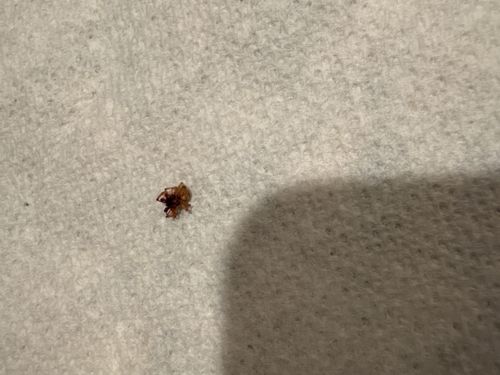Flea
Scientific Name: Ctenocephalides felis (cat flea, most common species on dogs and cats), Ctenocephalides canis (dog flea)
Order & Family: Order Siphonaptera, Family Pulicidae (common fleas)
Size: Typically 1 to 4 mm (.04 to .16 inches) in length

Natural Habitat
Fleas are found globally and can live on various hosts. In homes, they often reside in carpets, bedding, furniture, and pet resting areas. Outdoors, they can be in lawns, shady areas, and crawl spaces where pets or wildlife frequent.
Diet & Feeding
Adult fleas feed exclusively on the blood of warm-blooded animals, including mammals and birds.
Behavior Patterns
Fleas are wingless insects that are excellent jumpers, able to leap extended distances vertically and horizontally. They use their strong claws to cling to hosts and their piercing mouthparts to feed. They undergo complete metamorphosis with egg, larval, pupal, and adult stages. High humidity and warm temperatures favor their development.
Risks & Benefits
Risks: Fleas can cause severe itching, skin irritation, and allergic reactions (flea allergy dermatitis) in pets and humans. They can also transmit diseases such as murine typhus and plague (though rare in developed countries), and act as intermediate hosts for tapeworms (e.g., Dipylidium caninum). Benefits: In some ecosystems, they may serve as a minor food source for other insects, but their role is generally considered detrimental due to their parasitic nature and disease transmission capabilities.
Identified on: 8/20/2025